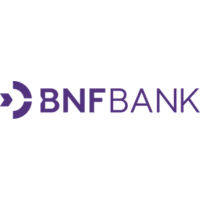Why Excel fails at cash flow forecasting?
By Nomentia
Cash flow forecasting is essential for financial planning, ensuring businesses can meet obligations, plan investments, and avoid liquidity surprises. But is Excel still the best tool for the job?

While Excel is widely used, its limitations become clear as businesses grow. Manual data entry increases errors, making forecasts unreliable. Updating formulas, managing multiple versions, and consolidating data across subsidiaries can turn a simple task into a logistical challenge.
Why Accurate Forecasting Matters
-
Supports investment decisions by optimizing liquidity.
-
Enhances financial stability and risk management.
-
Strengthens supplier and customer relationships through better payment planning.
-
Improves scenario planning and investor confidence.
Challenges of Excel-Based Forecasting
-
Errors & Inaccuracy: Manual data handling leads to miscalculations.
-
Scalability Issues: As data grows, Excel becomes slow and error-prone.
-
Limited Automation: Requires constant updates and lacks integration with banking and ERP systems.
-
Poor Risk Management: Difficult to model exchange rate fluctuations and market uncertainties.
-
Lack of Strategic Insights: Hard to align cash flow with long-term financial goals.
As Hubert Rappold, Senior Treasury Expert at Nomentia, puts it:
“Excel’s lack of automation becomes a major bottleneck as companies scale. Purpose-built software delivers accuracy and time savings.”
If your business is expanding, switching to a dedicated cash forecasting tool isn’t just an upgrade; it’s a necessity.
Can’t get enough? Check out these latest items
 https://treasuryxl.com/wp-content/uploads/2023/03/Treasurer-Search-Logo.png
200
200
treasuryXL
https://treasuryxl.com/wp-content/uploads/2018/07/treasuryXL-logo-300x56.png
treasuryXL2025-11-04 15:12:002025-11-04 15:12:00Senior Treasurer @ Treasurer Search
https://treasuryxl.com/wp-content/uploads/2023/03/Treasurer-Search-Logo.png
200
200
treasuryXL
https://treasuryxl.com/wp-content/uploads/2018/07/treasuryXL-logo-300x56.png
treasuryXL2025-11-04 15:12:002025-11-04 15:12:00Senior Treasurer @ Treasurer Search https://treasuryxl.com/wp-content/uploads/2025/06/Nirav-Interview-1.png
200
200
treasuryXL
https://treasuryxl.com/wp-content/uploads/2018/07/treasuryXL-logo-300x56.png
treasuryXL2025-11-04 07:00:482025-11-04 16:19:30Treasury in the Age of Fintech: Insights from Money 20/20
https://treasuryxl.com/wp-content/uploads/2025/06/Nirav-Interview-1.png
200
200
treasuryXL
https://treasuryxl.com/wp-content/uploads/2018/07/treasuryXL-logo-300x56.png
treasuryXL2025-11-04 07:00:482025-11-04 16:19:30Treasury in the Age of Fintech: Insights from Money 20/20 https://treasuryxl.com/wp-content/uploads/2025/08/Blog-Kyriba-7.png
200
200
treasuryXL
https://treasuryxl.com/wp-content/uploads/2018/07/treasuryXL-logo-300x56.png
treasuryXL2025-11-04 07:00:232025-11-03 16:46:04The $1.5 million gap between seeing your cash and investing it
https://treasuryxl.com/wp-content/uploads/2025/08/Blog-Kyriba-7.png
200
200
treasuryXL
https://treasuryxl.com/wp-content/uploads/2018/07/treasuryXL-logo-300x56.png
treasuryXL2025-11-04 07:00:232025-11-03 16:46:04The $1.5 million gap between seeing your cash and investing it https://treasuryxl.com/wp-content/uploads/2023/03/Treasurer-Search-Logo.png
200
200
treasuryXL
https://treasuryxl.com/wp-content/uploads/2018/07/treasuryXL-logo-300x56.png
treasuryXL2025-11-03 10:29:042025-11-03 10:29:04Treasury Manager (m/w/d) – München @ Treasurer Search
https://treasuryxl.com/wp-content/uploads/2023/03/Treasurer-Search-Logo.png
200
200
treasuryXL
https://treasuryxl.com/wp-content/uploads/2018/07/treasuryXL-logo-300x56.png
treasuryXL2025-11-03 10:29:042025-11-03 10:29:04Treasury Manager (m/w/d) – München @ Treasurer Search https://treasuryxl.com/wp-content/uploads/2025/04/Treasury-Spring-van-Template-2.png
200
200
treasuryXL
https://treasuryxl.com/wp-content/uploads/2018/07/treasuryXL-logo-300x56.png
treasuryXL2025-11-03 07:00:152025-10-31 11:52:41Robust appetite for risk whilst signals continue to be mixed
https://treasuryxl.com/wp-content/uploads/2025/04/Treasury-Spring-van-Template-2.png
200
200
treasuryXL
https://treasuryxl.com/wp-content/uploads/2018/07/treasuryXL-logo-300x56.png
treasuryXL2025-11-03 07:00:152025-10-31 11:52:41Robust appetite for risk whilst signals continue to be mixed https://treasuryxl.com/wp-content/uploads/2024/01/Template_VACANCY-featured.png
200
200
treasuryXL
https://treasuryxl.com/wp-content/uploads/2018/07/treasuryXL-logo-300x56.png
treasuryXL2025-10-31 07:00:062025-10-31 09:00:59Vacancy Global Treasury Director – South Netherlands
https://treasuryxl.com/wp-content/uploads/2024/01/Template_VACANCY-featured.png
200
200
treasuryXL
https://treasuryxl.com/wp-content/uploads/2018/07/treasuryXL-logo-300x56.png
treasuryXL2025-10-31 07:00:062025-10-31 09:00:59Vacancy Global Treasury Director – South Netherlands https://treasuryxl.com/wp-content/uploads/2025/10/BNF-Bank.png
200
200
treasuryXL
https://treasuryxl.com/wp-content/uploads/2018/07/treasuryXL-logo-300x56.png
treasuryXL2025-10-30 11:07:122025-10-30 11:07:12Treasury Executive – Treasury Department @ BNF Bank
https://treasuryxl.com/wp-content/uploads/2025/10/BNF-Bank.png
200
200
treasuryXL
https://treasuryxl.com/wp-content/uploads/2018/07/treasuryXL-logo-300x56.png
treasuryXL2025-10-30 11:07:122025-10-30 11:07:12Treasury Executive – Treasury Department @ BNF Bank https://treasuryxl.com/wp-content/uploads/2023/03/Treasurer-Search-Logo.png
200
200
treasuryXL
https://treasuryxl.com/wp-content/uploads/2018/07/treasuryXL-logo-300x56.png
treasuryXL2025-10-30 10:25:082025-10-30 10:30:05Global Treasury Director – South Netherlands @ Treasurer Search
https://treasuryxl.com/wp-content/uploads/2023/03/Treasurer-Search-Logo.png
200
200
treasuryXL
https://treasuryxl.com/wp-content/uploads/2018/07/treasuryXL-logo-300x56.png
treasuryXL2025-10-30 10:25:082025-10-30 10:30:05Global Treasury Director – South Netherlands @ Treasurer Search https://treasuryxl.com/wp-content/uploads/2023/09/EY.png
200
200
treasuryXL
https://treasuryxl.com/wp-content/uploads/2018/07/treasuryXL-logo-300x56.png
treasuryXL2025-10-30 10:21:262025-10-30 10:30:11Senior Consultant Treasury @ EY
https://treasuryxl.com/wp-content/uploads/2023/09/EY.png
200
200
treasuryXL
https://treasuryxl.com/wp-content/uploads/2018/07/treasuryXL-logo-300x56.png
treasuryXL2025-10-30 10:21:262025-10-30 10:30:11Senior Consultant Treasury @ EY


